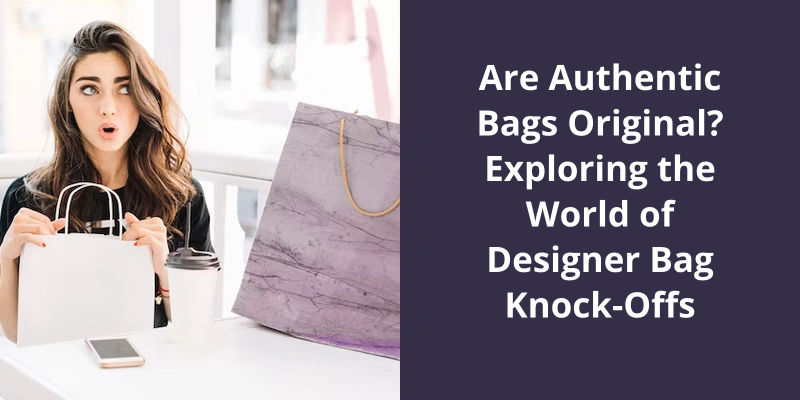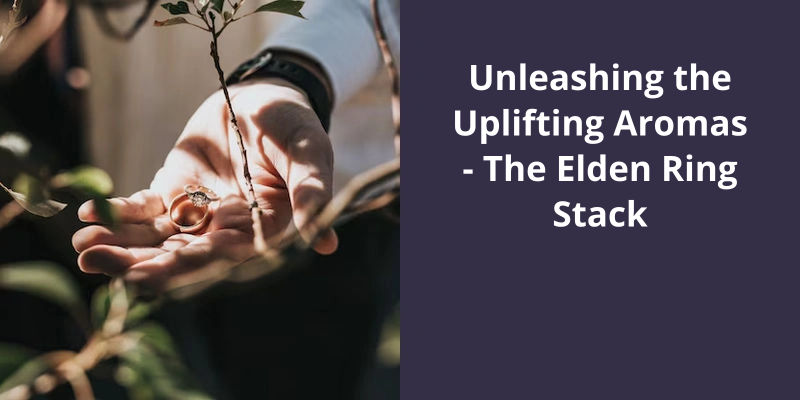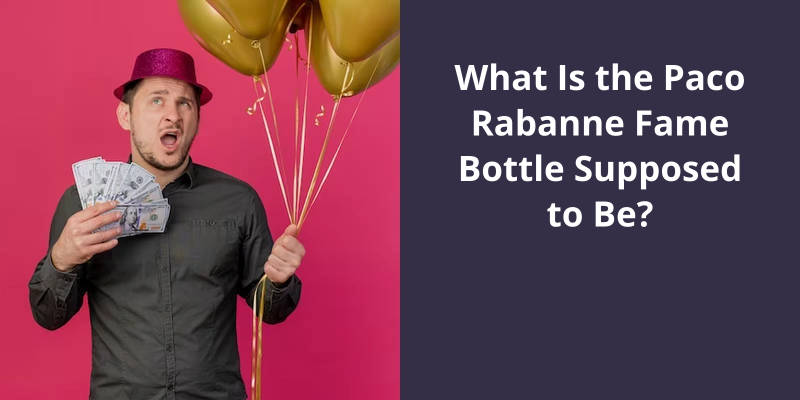Authentic bags are indeed original. When we say a bag is authentic, it means it is a genuine piece often made by officially recognized designers or brands. These items are produced with quality materials, outstanding craftsmanship, and their designs are often protected by copyright laws. They are sold by authorized retailers, and they come with official documents, such as certificates of authenticity, verifying their originality. Unfortunately, the market has numerous replica or knock-off bags mimicking these authenticated bags, but they lack the same quality, durability, and prestige associated with owning an original bag. So, if a bag is termed authentic, it is, indeed, an original piece.

What Is the Difference Between Original and Authentic Bags?
However, authentic bags carry more than just a name – they represent a brands image, style and reputation. Brands invest in research and development, material sourcing and craftsmanship, making sure that every detail is accounted for. This level of attention is often not something that counterfeit producers can match, resulting in inferior products.
Authentic bags are also more durable than counterfeit ones. They’re built to last, with materials that are carefully chosen and tested to withstand the rigours of daily use. Counterfeit bags are often made with subpar materials, using shortcuts to cut costs, which leads to compromised quality and decreased longevity.
Beyond the quality, authenticity ensures ethical production chain, ensuring every employee is fairly compensated and treated with respect. Counterfeit production line often involves exploitative labour practices, using cheapest labour possible without regard for worker’s welfare. Purchasing authentic bags is a way to support ethical production, contributing to making the world a better place for all.
How to Spot a Fake Bag
To spot a fake bag, check for inconsistencies in the design, such as uneven stitching or misspelled brand names. Look for the quality of the materials used, and assess the weight and texture of the bag. Research the pricing of the bag from a trusted retailer and compare it with the price being offered to you. Additionally, always purchase from reputable sellers and scrutinize the bags thoroughly before buying.
As the market for designer bags continues to grow, so does the prevalence of counterfeit products. Experts estimate that a large percentage of the bags being sold on the market are fake, leaving many consumers wondering if their designer purchase is genuine or not. To help you determine whether your handbag is the real deal, we’ve compiled a list of tips from experts in the industry. The first tip? Check the hardware.
How Common Are Fake Bags?
Make sure the zippers, clasps, and other hardware look and feel like high-quality materials. Cheap hardware is a dead giveaway for a fake bag. Additionally, authentic bags will have branded hardware with the designers name or logo prominently displayed. Be wary of bags with unbranded or mismatched hardware.
Inspect the stitching. Authentic bags will have even and consistent stitching, while fake bags may have uneven or loose stitching. Look closely at the seams and edges of the bag to examine the stitching.
Examine the materials. High-end designer bags are made with top-quality materials, such as leather, suede, and exotic skins. Fake bags often use cheaper materials that may look and feel like the real thing but won’t hold up over time. Be suspicious of bags that feel overly stiff or artificial.
Look for authenticity labels. Many designer brands attach authenticity labels to their bags to help buyers verify that the item is genuine. These labels may be sewn into the lining of the bag or attached to a tag. Do some research to find out what the specific label for your designer bag should look like.
Check for serial numbers. Most high-end designer bags will have a serial number or code stamped somewhere on the bag. This number can be checked against a database maintained by the brand to verify it’s authenticity. Be wary of bags with missing or mismatched serial numbers.
Overall, it’s important to approach designer bags with a healthy dose of skepticism. If a deal seems too good to be true, it probably is. Dont be afraid to ask for help or seek out expert guidance when trying to determine whether a bag is genuine. With careful inspection and attention to detail, you can spot a fake bag and avoid getting scammed.
How to Spot Fake Designer Shoes and Clothing
As a human, there are a few ways to spot fake designer shoes and clothing. Firstly, check for the quality of materials and stitching. Authentic designer items are made with high-quality materials and feature flawless stitching. Secondly, compare the item to the designer’s official website or store. Look for differences in logos, font, and formatting. Thirdly, be aware of the price. If the price seems too good to be true, it probably is. Lastly, buy from reputable retailers and online stores, and avoid purchasing from individuals or unauthorized sellers.
The world of luxury handbags can be a tricky one. With so many counterfeit bags on the market, it’s hard to know if what you’re buying is the real deal. Thankfully, there’s a new app that makes it easier than ever to authenticate your bags. The Real Authentication app is a game-changer for anyone who loves designer bags. But what makes this app so revolutionary? Let’s take a closer look.
Is There an App to Check if a Bag Is Real?
It’s rare to find an app that can authenticate designer bags with ease. Fortunately, the Real Authentication app has bridged this gap in the market. The app is easy to use and can identify counterfeit bags within minutes. It’s an essential tool for anyone who wants to invest in bags without getting duped by fakes.
You can avoid potential legal issues, returns, and unhappy customers.
Previously, I’d have to try to authenticate bags myself, which was a time-consuming and risky process. However, the app has simplified the process and given me a sense of security when purchasing bags online.
It’s a revolutionary app that’s changed the way we shop and sell bags forever.
The Importance of Authenticating Designer Bags
Authenticating designer bags is important to ensure that you’re getting what you paid for and not a counterfeit product. Counterfeit bags have flooded the market and they’re often sold as genuine products. Authenticating a designer bag can protect your investment, ensure the quality of the product, and support the ethical treatment of the fashion industry.
While selling fake bags is certainly illegal, what about wearing them? It’s a less straightforward question, but one that’s serious implications for both fashion lovers and the industry as a whole. Read on to learn more about the legality and ethics of wearing fake bags.
Is It Illegal to Wear a Fake Bag?
However, wearing a fake bag isn’t necessarily illegal, as long as the bag isn’t being used to deceive others into thinking it’s a genuine designer bag. Wearing a fake bag can be seen as supporting and perpetuating the counterfeit industry, which often relies on child labor and funds criminal activity.
Many luxury brands take legal action against individuals who’re caught selling counterfeit goods, but it’s less common for them to go after consumers who’re wearing fake bags. This is because it can be difficult to prove that the individual knew the bag was a fake. However, some luxury brands have started to crack down on consumers who wear fake bags by conducting raids and confiscating them.
Legal Consequences for Selling Counterfeit Bags
- Imprisonment
- Fines
- Civil lawsuits filed by the trademark owner
- Confiscation of counterfeit goods
- Loss of business reputation
- Permanent record of criminal conviction
- Restrictions on future business opportunities
- Loss of licenses and permits
- Increased scrutiny from law enforcement agencies
Source: Law Against Selling Fake Bags | LoveToKnow
When it comes to determining the authenticity of a designer bag, the presence of a serial number can sometimes be a helpful clue. However, it’s important to note that just because a bag has a serial number doesn’t necessarily mean that it’s authentic. In fact, many counterfeiters have become skilled at creating fake bags with accurate serial numbers. Ultimately, the only way to truly determine the authenticity of a designer bag is to carefully examine it’s details and quality, including clear close-up photos of both the inside and outside. Let’s take a closer look at some of the key factors to consider when determining the authenticity of a designer bag.
Can a Fake Bag Have a Serial Number?
The existence of a serial number on a designer handbag isn’t a definitive indication of it’s authenticity. While major brands often incorporate a serial number system in the production of their bags, counterfeiters have found ways to replicate these numbers. As a result, many fake bags produced in recent years come complete with a serial number that appears legitimate.
This means that checking the numbered tag alone isn’t enough to guarantee the authenticity of a handbag. A close examination of the quality of the bags materials, lining, and stitching is necessary. Additionally, a reputable sellers authenticity guarantee can help to establish a bags genuine status, as can prior customer feedback and reviews.
For example, some older styles from certain brands weren’t produced with this feature. Furthermore, some companies occasionally change their numbering systems, which means that variations in formatting and placement can further complicate the counterfeit detection process.
Shoppers are encouraged to arm themselves with knowledge about the brand and it’s features, and are recommended to purchase from reputable sellers with established authenticity guarantees. By taking these steps, they can minimize the risk of buying a counterfeit item that may not meet their expectations in terms of quality, durability, or style.
How to Authenticate a Designer Bag: Tips and Tricks
This article provides useful tips and tricks on how to authenticate a designer bag. Whether you’re a seasoned collector or a newbie looking to make your first purchase, follow these steps to avoid purchasing a fake designer bag.
Conclusion
In conclusion, the debate over the authenticity of bags has been ongoing for quite some time now. While there are those who argue that authentic bags are indeed original, there are others who believe that there’s simply no way to truly guarantee the authenticity of any bag. Despite this ongoing discussion, it’s clear that consumers deserve to know the truth about the products they’re purchasing. Whether you’re looking to purchase a high-end designer bag or a more affordable option, the most important thing is to do your research, shop from reputable sources, and carefully examine the product in question before making a purchase. By doing so, you can help ensure that you’re getting exactly what you’re paying for and avoid falling prey to counterfeiters who seek to profit off of unsuspecting consumers.





